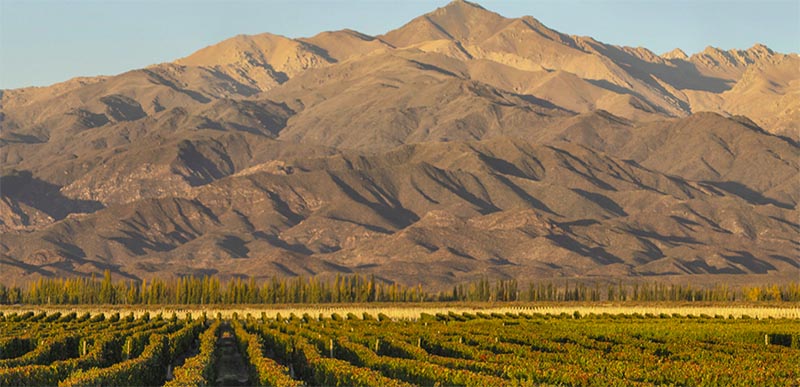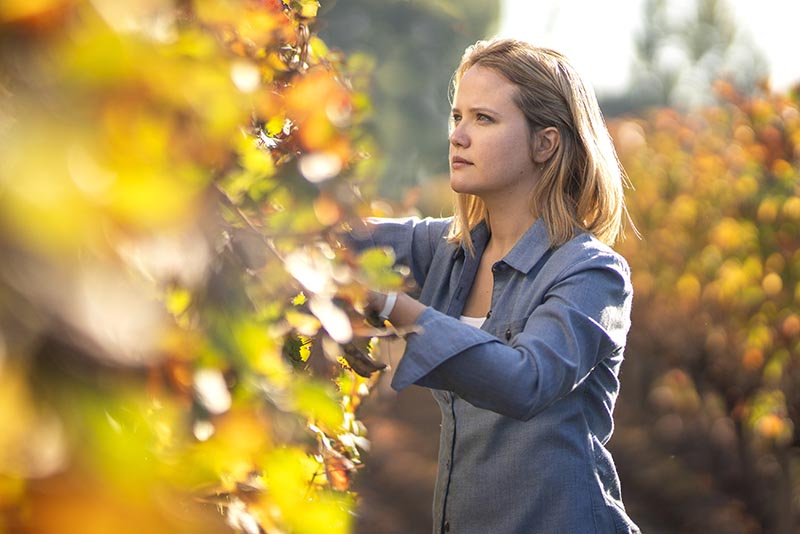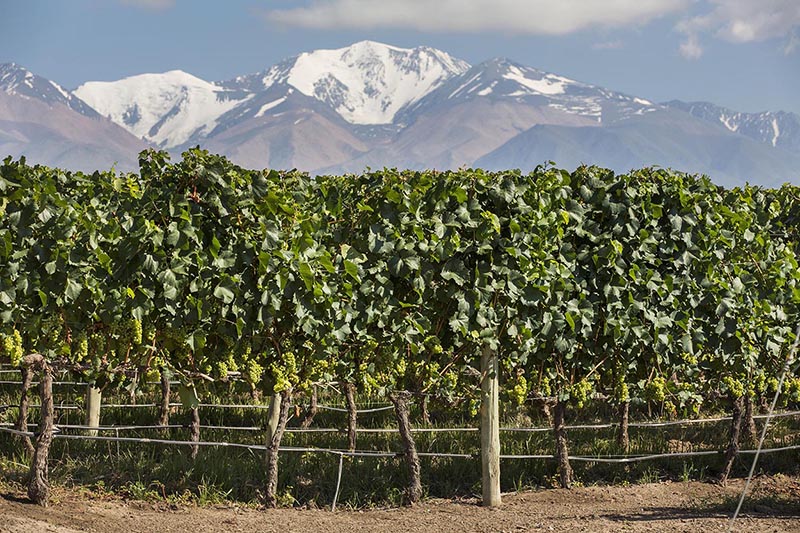Having grown up surrounded by nature, enjoying long summers at her grandfather’s farm in San Rafael, Mendoza, Daniela Mezzatesta fell in love with the countryside and its cycles, so it wasn’t a surprise when she decided to study Agronomy at the Faculty of Agrarian Sciences of the Universidad de Cuyo, where she graduated with honors.
Daniela Mezzatesta has spent time doing research in France, Italy, and the United States, worked at INTA and has received a grant from CONICET while also working as a specialist in research and development in viticulture in the private sphere. Her tutor for her doctoral thesis – a terroir specialist at the University of Bordeaux – introduced her to Terrazas de los Andes, where she now heads the research, development and vineyard sustainability team.
It’s a key role at the winery in Luján de Cuyo, Mendoza, given that all the vineyards are transitioning to organic cultivation and continuously evolving to embrace biodynamic practices and the use of non-chemical pest control.

Daniela Mezzatesta, passion and expertise in the service of wine
What are the main areas in which you work?
The most important aspect is my work with the soils, because with 250 millimeters of rainfall a year, the challenge is to cultivate soils with more nutrients that capture carbon and consume as little water as possible.
Collaboration and communication are key parts of the role, both with our internal viticultural, oenology and sustainability teams, and the interdisciplinary research teams. Together we address these issues, which require multiple points of view and different kinds of expertise.
Right now, we’re making compost to ensure a source of fertility and to act a kind of “sponge” that retains more water in the soil. We’re also working on biodiversity: first we focused on identifying what we have and then implementing what we know works, such as encouraging native bird species who eat the insects in the vineyard.
We’re also reproducing native plants to add them to the vineyards, generating a complex, multi-layered environment and cultivating different facets of regenerative agriculture.
All this is part of the overarching goal of sustaining viticulture over time, we’re aware that all our interactions with the crop have an impact and we want the ultimate outcome to be good for the ecosystem.
Do you exchange information with the institutions you work with?
Terrazas de los Andes encourages networking with a range of research institutions, which helps us to achieve much more than if we each worked separately. We work with INTA, CONICET, the Universidad Nacional de San Luis and the Faculty of Agrarian Sciences at the Universidad Nacional de Cuyo, and we also collaborate with institutions overseas. All the partners make their contribution and work to ensure that these improvements reach the consumer.
We’re also working in terms of social responsibility and sharing that knowledge. For example, when we started with the native plants we didn’t have any records but we made contact with ArgentiNat, an open, collaborative platform of citizen science.
We’ve been uploading images of everything we find in the vineyards that are then available to anyone interested: we’ve identified 410 species from 1600 observations. We help to generate that database because we believe that sustainability is transversal and everyone at different stages of the production chain can make a contribution.

Daniela Mezzatesta, how do these developments affect the wines at Terrazas de los Andes?
It’s part of our renewed focus on terroir. We’ve studied a lot of different soil types, sectors, slopes, climates and forms of crop management. Now we have to implement the benefits of what we’ve learned.
What happens, for example, if we have vegetable cover that emits aromas that can stick to the cuticle of the grape and so come through in the flavors of the wine?
The Malbec Terrazas de los Andes Parcel Licán, for example, is rich in mountain herb aromas and the vineyard is extensively covered with a range of vegetation and surrounded by patches of native flora so there’s clearly a direct influence on the flavors.
Some studies also suggest that vegetable coverage competes for resources with the vines and so can restrict the water supply in a way that increases polyphenols and color. We still have plenty of questions and avenues to explore.
How does this work help to ameliorate the effects of climate change in the vineyard?
An agricultural engineer is an architect of the landscape. What we do generates changes in areas such as pest control and the impact of temperature at the vineyard and that helps us to mitigate climate change with more vivacious soils and native vegetation that captures more carbon.
If a more diverse and complex ecosystem is maintained the vineyards will be healthier and we can better conserve our vines. You have to remember that in Las Compuertas we have vineyards from 1929 and it’s important to preserve that genetic material.
Another point to make is related to water, we specialize in the calculating precisely how much water each lot needs. We have a team led by the agricultural engineer Mariano Dorado that focuses exclusively on water every season, gathering data to determine exactly how much to water depending on the retention capacities of each parcel.

You´re a member of the Club de Mujeres Profesionales del Vino and through your personal communication channels you seek to reflect the roles of women in the wine industry. What is your reflection on the advancement of women in these spaces?
We’re researching the roles of women in the working teams. I’ve become interested in how women work as harvest operators in the winery and out in the vineyard. I think that the challenge years ago was to establish a level of respect. Today, you see a lot of girls in different sectors of the winery although there’s still a lot to do, especially out in the vineyard.
But I have seen that a woman applying for a role at the winery or in the vineyard isn’t generally treated in the same way as a man because they often come from a background of working at home and taking care of children. So, at Terrazas de los Andes, we’re developing programs to train women in the use of machinery, for example, looking to generate equal opportunities.
At Terrazas de los Andes, over the past three years, the number of women in operator’s roles during harvest has increased by 30% and that is related to generating environments of respect and solidarity.



